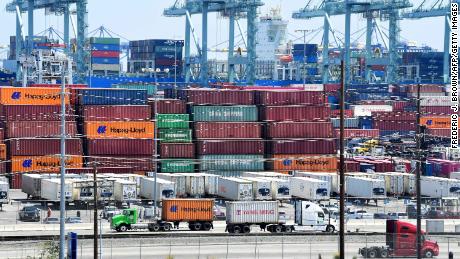New York (CNN Business)The bond market is trying to tell us something: The yield curve keeps inverting, flashing a warning sign that a recession could be coming.
The 10-year US Treasury yield briefly fell below the 2-year yield again this week.
A yield curve inversion happens when long-term bond yields fall below short-term bond yields. That rarely occurs. Before this month, that section of the yield curve hadn't inverted since 2007, just before the Great Recession.
Yield curve inversions are one of those moments in markets that get everyone's attention.
That's because inversions of certain parts of the yield curve have often been predictors of American recessions. It's not normal for investors to demand higher rates on short-term loans, which are supposed to be less risky.
People who buy bonds are effectively loaning money to whomever is selling the bond ŌĆö the US government, in this case. Loans have to be paid back, as opposed to investments in stocks. Generally speaking, when investors get spooked, they take money out of stocks and put it in bonds.
When investors get really spooked, they demand higher rates to loan money even for shorter periods of time. That's what's going on now.
Bond prices and the interest rates they pay move in opposite directions. When demand for a bond is strong, prices rise and the interest rates those bonds pay drops.
Investors have poured money into the safety of US bonds as the global economy has slowed. But they've been investing more in long-term bonds than short-term bonds, sending long-term yields lower. Last week, the yield on the 30-Year US Treasury fell below 2% for the first time in history.
For sure, what's happening in the bond market is significant.
Inverted yield curves have preceded every US recession in the modern era.
But the inversion doesn't mean a recession is imminent. Recessions occured 22 months on average following the past five yield curve inversions, according to Goldman Sachs.
Investors have continued to plow into bonds even though they are being promised a miniscule rate of return ŌĆö or in the case of certain bonds in other big developed markets, no return at all. Germany sold 30-year debt at a negative yield for the first time this week, showing how anxious investors are.
Worries about the global economy's slowdown have stoked renewed fears of a downturn in the United States, particularly in light of the trade war with China.
Although an inverted yield curve doesn't necessarily cause a downturn itself, turmoil in the bond market can wind up becoming a self-fulfilling prophecy, as it hurts both investor and business confidence.




















